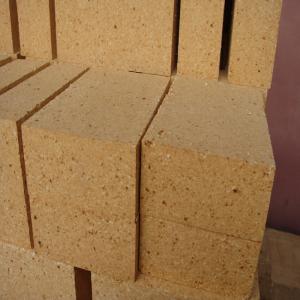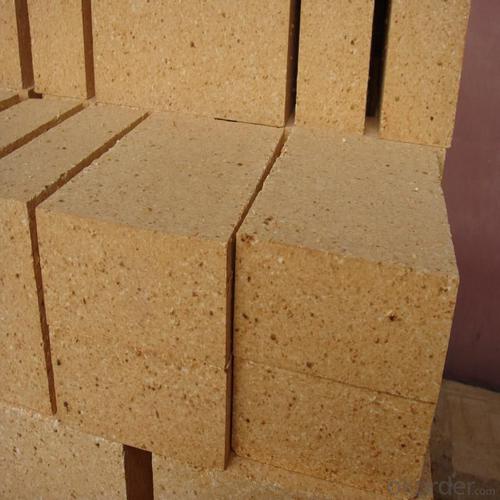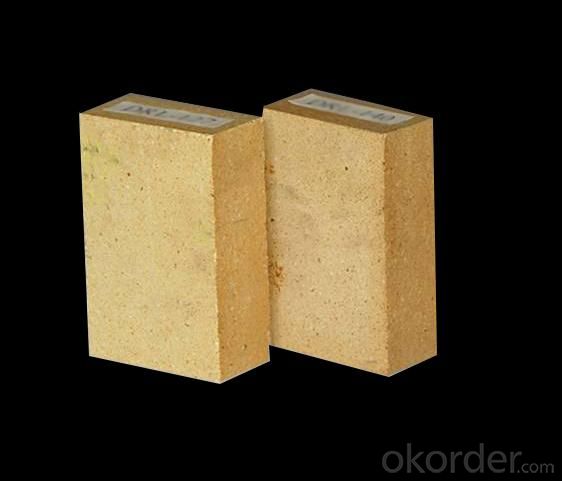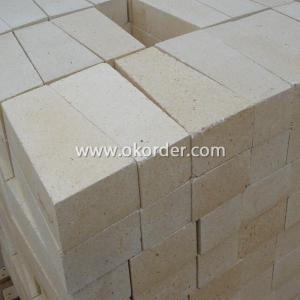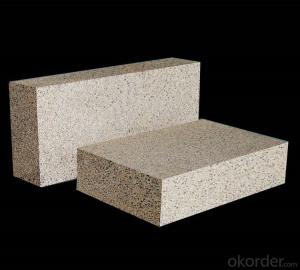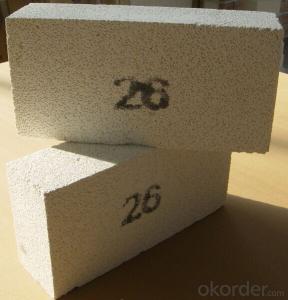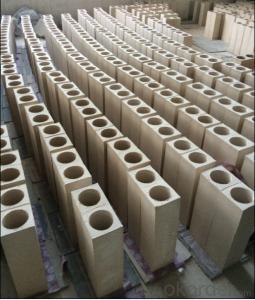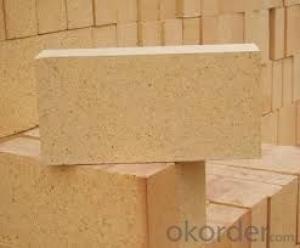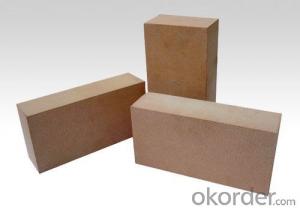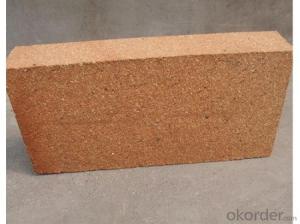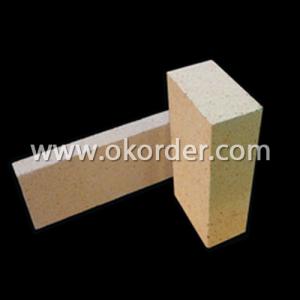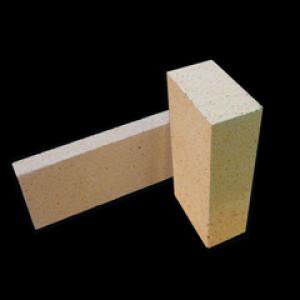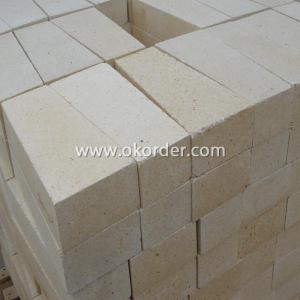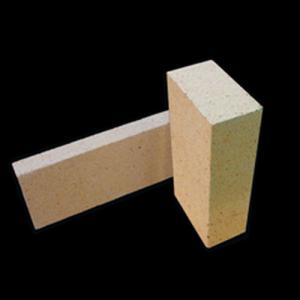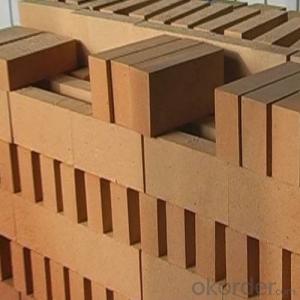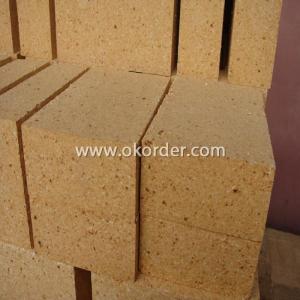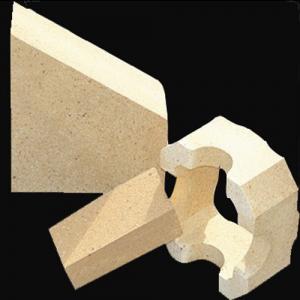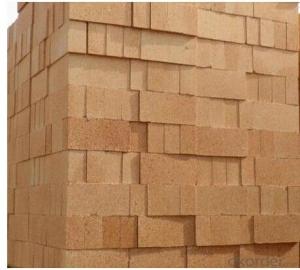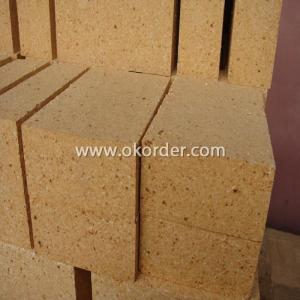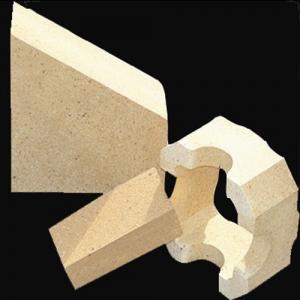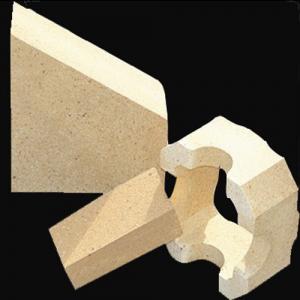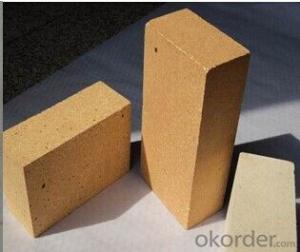Fireclay Brick FC60
- Loading Port:
- China Main Port
- Payment Terms:
- TT or L/C
- Min Order Qty:
- 5 ton m.t
- Supply Capability:
- 1000 Tons Per Month m.t/month
OKorder Service Pledge
OKorder Financial Service
You Might Also Like
General Information of Fireclay brick FC60
Our corporation produces a comprehensive range of Fireclay bricks, with 30% to 58% alumina content, all of these bricks exhibit excellent performance.
Our Fireclay bricks are the final result of blending excellent fused alumina and silicon as the main raw materials with cutting-edge technology, adding superfine powder, after mixing, drying, forming, in the high temperature shuttle kiln. We ensure you that the Fireclay Bricks made by us possess high quality standard and have gone through all the complicated quality control parameters. Their durability and strength adds life to the structure and they have the capacity of bearing high temperature.
Technical Data of Fireclay Brick FC60 | ||
Physical Properties: | ||
Refractoriness | ℃ | 1750 |
Permanent Linear Change(1400℃×2h)% | % | 0~-0.5 |
Apparent Porosity, % | % | ≤20 |
Cold Crushing Strength | Mpa | 50~60 |
Refractoriness Under Load (0.2Mpa) | ℃ | ≥1500 |
Thermal Expansion at 1000℃, | % | 0.6 |
Density | g/cm3 | ≥2.30 |
Chemical Analysis: |
|
|
Al2O3 | % | 58~60 |
Fe2O3 | % | 1.5~1.6 |
Note: | ||
Feature of Fireclay Brick FC60
Resistant to thermal shock, abrasion, chemical attack
High ability for anti-abrasion during work
Low shrinkage degree under high temperature so as to maintaining integrity of the furnace lining
Low apparent porosity, and low Fe2O3 content to reduce the carbon deposit in the blowhole and avoid the bricks broken in case of expansion

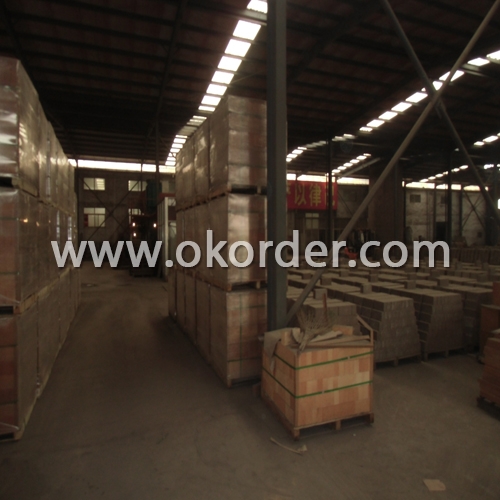
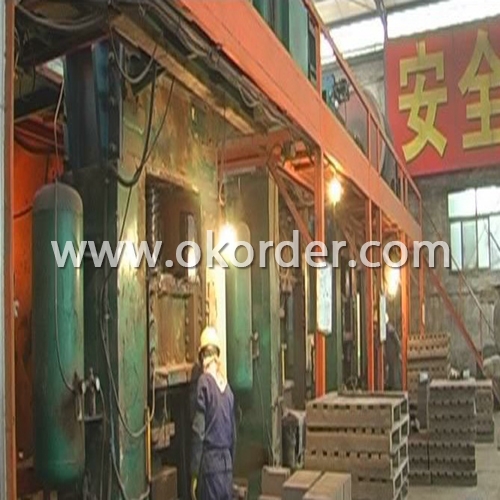
Applications of Fireclay Brick FC60
Fireclay brick FC60 is mainly used in the part of throat, stack, hearth, bottom for blast furnace and the stack for a big blast furnace.
1. Carbon baked furnaces in the alumina industry
2. Preheat zones and cyclones of rotary cement kilns
3. Insulation for glass tanks
4. Coke ovens
5. Blast furnaces
6. Reheating furnaces
7. Suspended roofs
8. Lime kilns
9. Chimney
- Q: how to distinguish the quality of high alumina refractory brick when you buy it ?
- see the gap between the bricks and between kiln roof and kiln wall, etc.. 6, the pressure and the volume density of Pei brick and brick Pei size, appropreate matching of high alumina powder and high aluminous aggregate and other materials, the drying and time, and the mud trapped material humidity 1. 7, to reach the requirements of production. 4, the order of loading Pei brick into kiln . should prevent the lack of a scene , the requirement , mixing time, different procedure and the order of the adding of raw materials of high alumina brick. 3, drawing plan and lack of edge of high alumina brick . 5
- Q: What are the differences between diatomite?brick and ordinary refractory bricks?
- The volume density of diatomite brick is 3.9 * 10-6, good compressive strength, belongs to the small outer insulation, spinel brick.
- Q: refractory bricks of fireclay
- According to the preparation process, it can be divided into bricks, high alumina brick, magnesia brickand so on, such as refractory clay brick, and ordinary brick; according to the shape and size, it can be divided into standard brick and silica?brick, it can withstand all kinds of physical and chemical changes and mechanical action at high temperature; silica?brick can be used as high-temperature building materials and structural material to build kiln and kinds of thermal equipments. Refractory material and fused brick with a certain shape and size are called refractory?brick for short.
- Q: The brick and ordinary clay brick which is expensive
- Of course expensive materials sintered clay brick, sintered clay brick fired common clay, shale and shale and coal gangue as raw materials by high temperature firing,
- Q: What are 85 bricks, 95 bricks and standard bricks? What are the specifications?
- 95 bricks are standard bricks.Specifications:95 bricks: 240*115*53mm85 bricks: 216*105*43mmArtificial brick, small bulk building, divided into brick (clay brick) and non sintered brick (sand lime brick, fly ash brick etc.), commonly known as brick.
- Q: What are the simple ways to distinguish between excessive clay bricks and less fired clay bricks?
- Generally speaking, compared with the exterior burning brick, the internal combustion brick not only saves the clay and the waste material, but also has smaller volume density, lower thermal conductivity, and can increase the intensity by about 20%. Burnover light color, sound, low intensity; burned brick deep color, crisp sound, high strength, irregular size. These two kinds of bricks are unqualified products.
- Q: should clay or refractory cement be used to lay refractory bricks?
- structure strength of this brick lining is not good, apply some refractory mud, only use some virgin clay and corundum, many of the traditional approaches are very simple, mullite and carbon slurry, the specific products are selected according to the selected material and water glass or organic binder. binding agent can choose phosphate, silica and high alumina, clay is one part of the refractory clay, there are many kinds of refractory slurry according to the material, clay-based mud does use refractory cement and corrosion resistance is low
- Q: the refractory brick in glass furnace burner was burning, the bricks on both sides of the fire hole were burning the blocked it, what will cause brick burning?
- The firebrick in glass melting furnace is mainly consisted of zircon brick, other ordinary refractory materials can not effectively prevent the erosion of glass solution. Because the glass melting liquid is eutectic mixture compared to the refractory bricks, it penetrates into the refractory brick and reduces its original performance, simply speaking, the glass melting liquid dissolves the refractory bricks as eutectic mixture .
- Q: Is the thickness of the kiln lining and the refractory brick the same concept?
- This is certainly not the same. The thickness of the refractory brick can be arbitrary, the thickness of the kiln lining is generally designed according to requirement
- Q: What is the difference between the refractory bricks, hand-made bricks and the machine pressure bricks?
- Hand-made brick mainly produces brick that is not easy to produce molding Machine pressure brick adopts 100 tons of press machine to mold the density of hand-made brick is not enough, it's light; machine pressure bricks can only produce bricks that produce molding at a time, hand-made bricks mainly adopts hydraulic vibration molding machine
1. Manufacturer Overview
| Location | Henan, China |
| Year Established | 2007 |
| Annual Output Value | Above US$ 60 Million |
| Main Markets | Mid East; Eastern Europe; North America |
| Company Certifications | ISO 9001:2008 |
2. Manufacturer Certificates
| a) Certification Name | |
| Range | |
| Reference | |
| Validity Period |
3. Manufacturer Capability
| a) Trade Capacity | |
| Nearest Port | Tianjin |
| Export Percentage | 31% - 50% |
| No.of Employees in Trade Department | 21-50 People |
| Language Spoken: | English; Chinese |
| b) Factory Information | |
| Factory Size: | Above 36,000 square meters |
| No. of Production Lines | Above 5 |
| Contract Manufacturing | OEM Service Offered |
| Product Price Range | Average |
Send your message to us
Fireclay Brick FC60
- Loading Port:
- China Main Port
- Payment Terms:
- TT or L/C
- Min Order Qty:
- 5 ton m.t
- Supply Capability:
- 1000 Tons Per Month m.t/month
OKorder Service Pledge
OKorder Financial Service
Similar products
Hot products
Hot Searches
Related keywords
